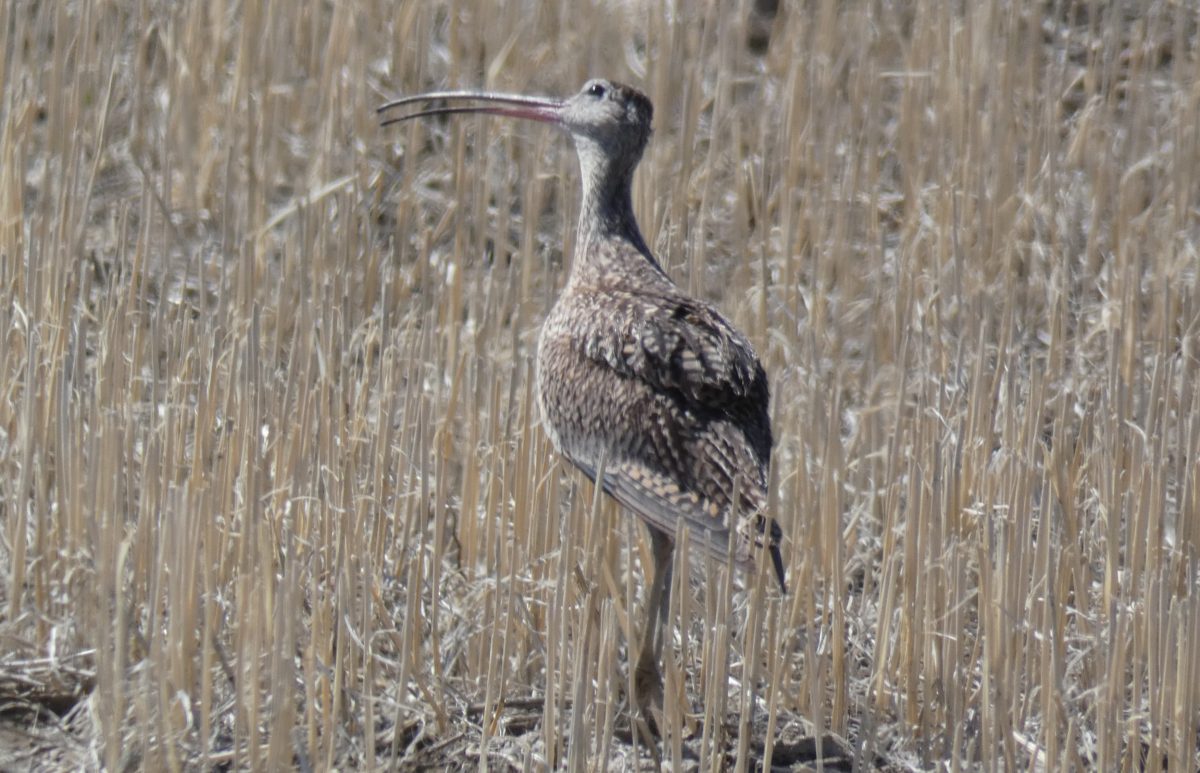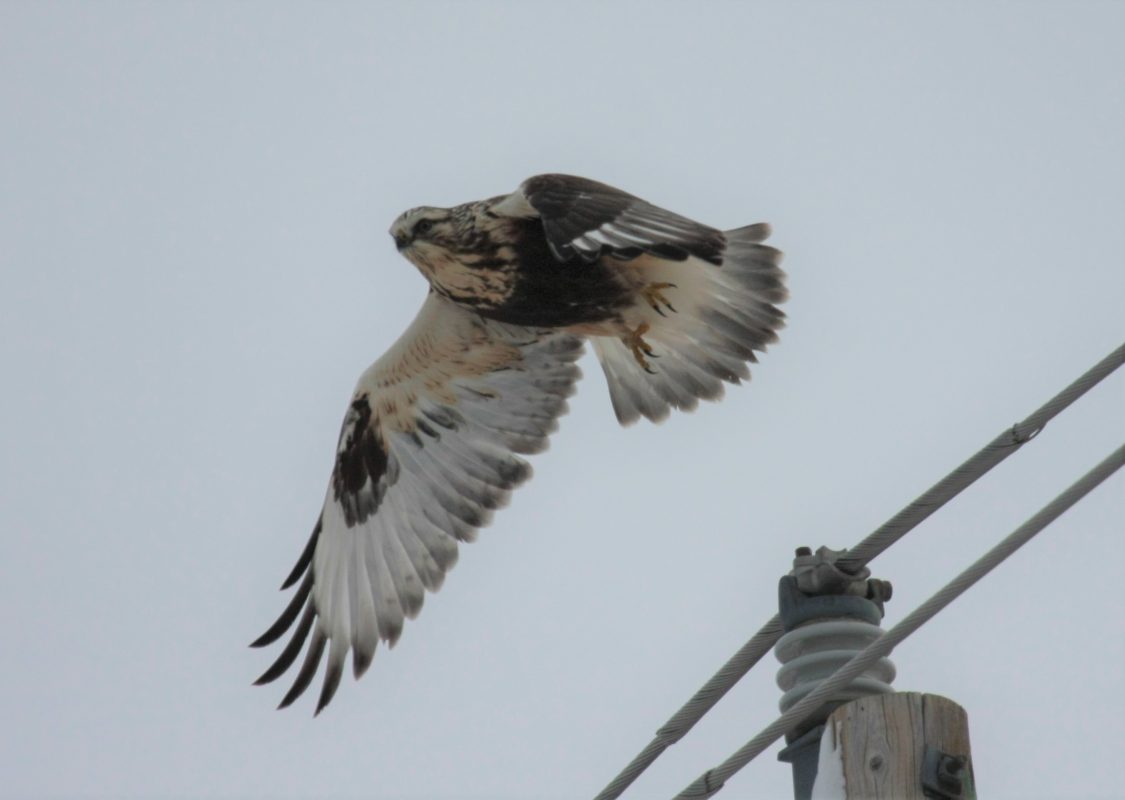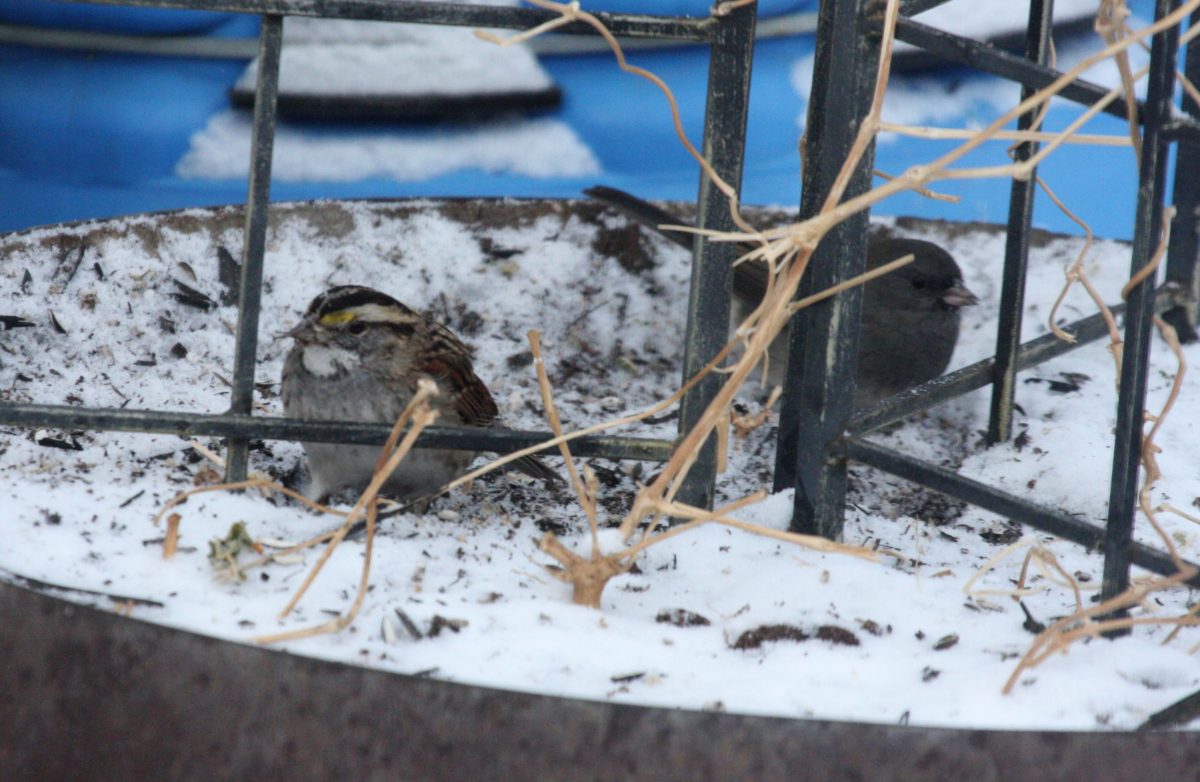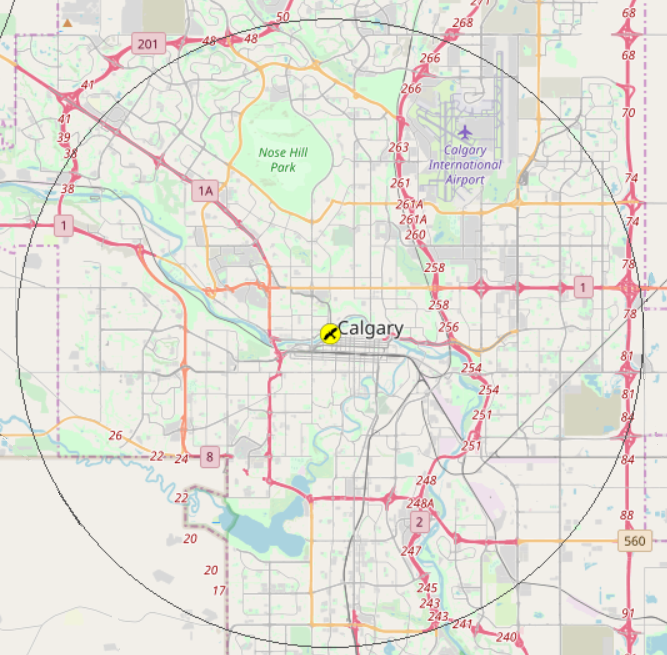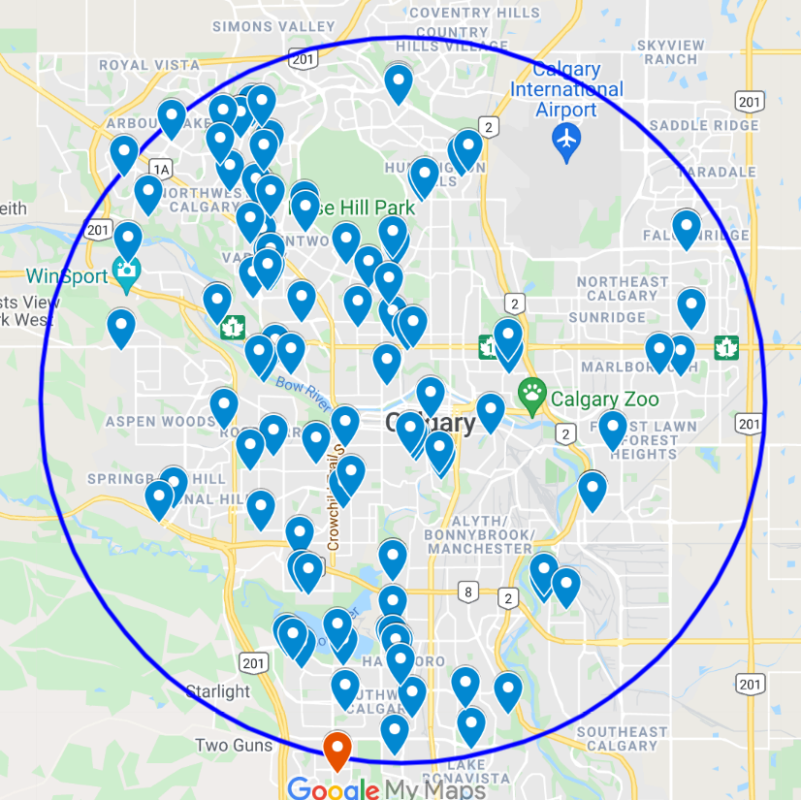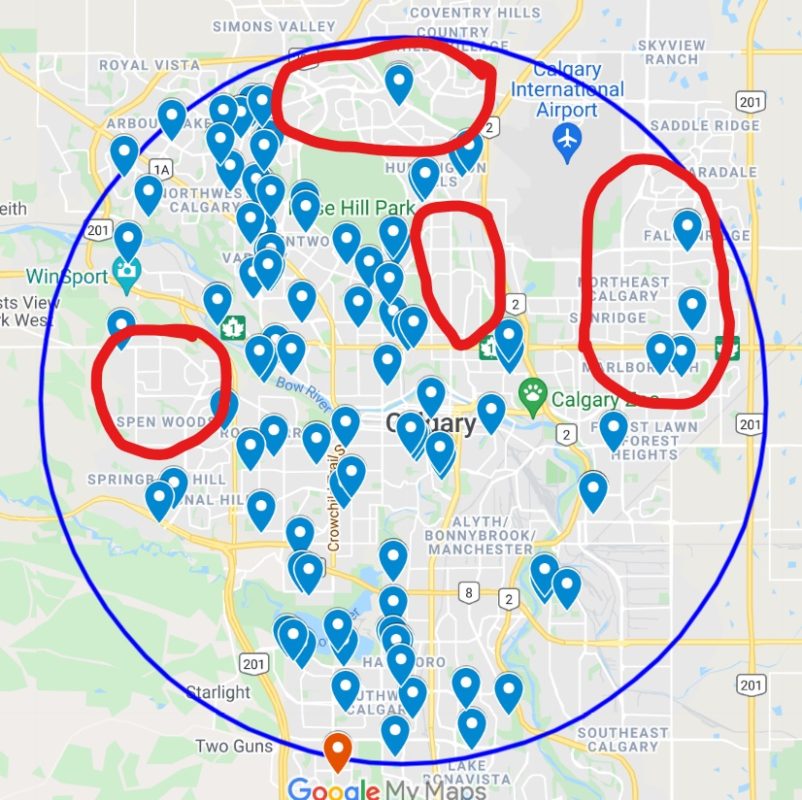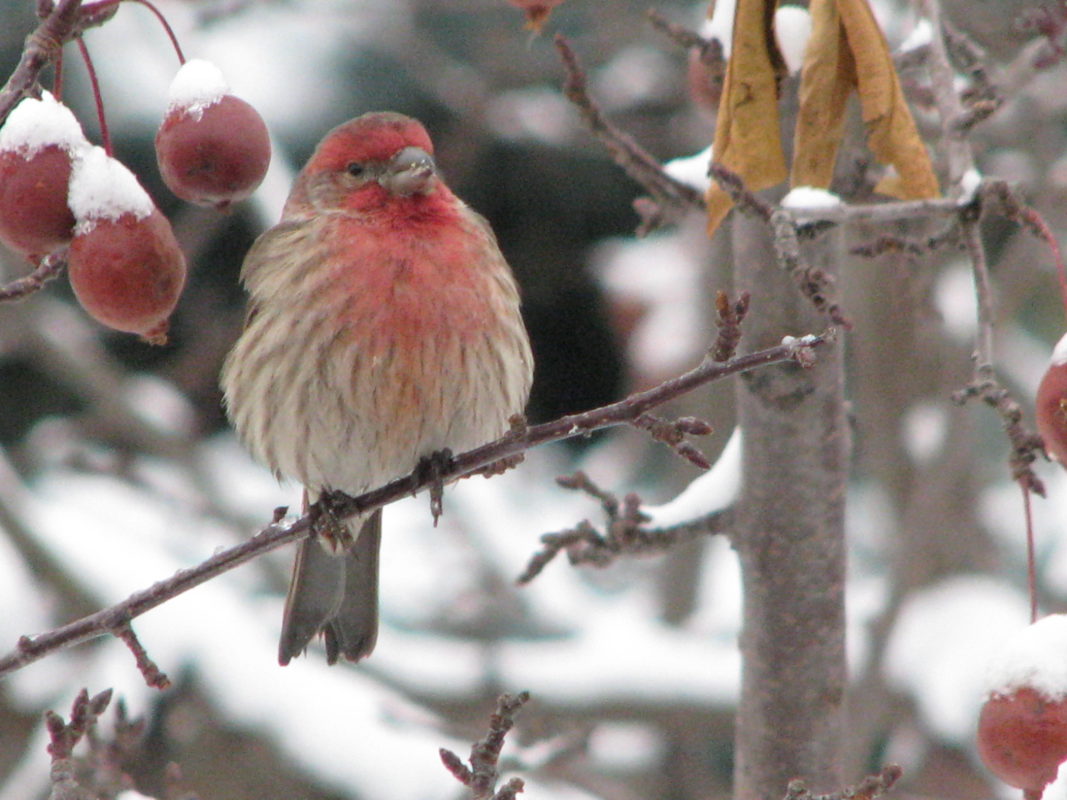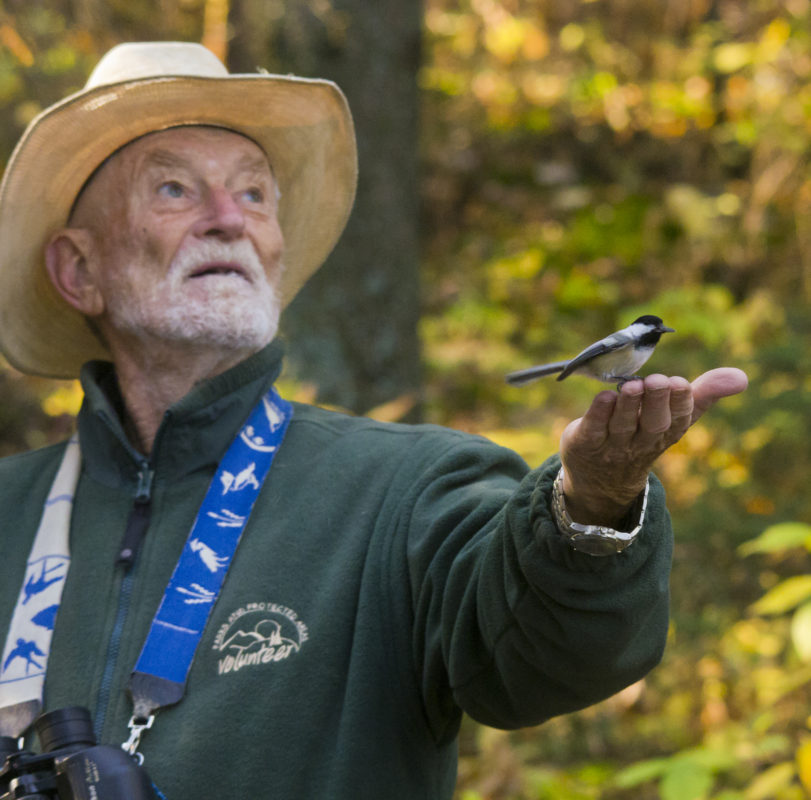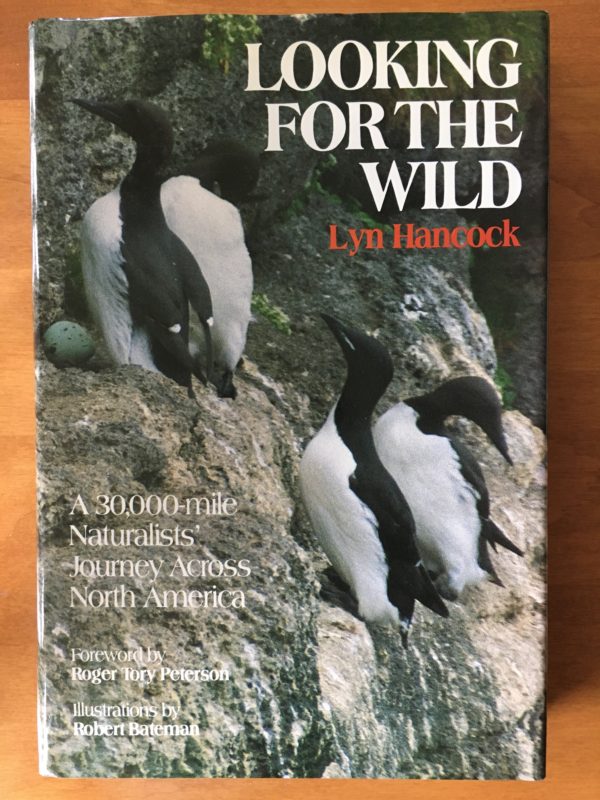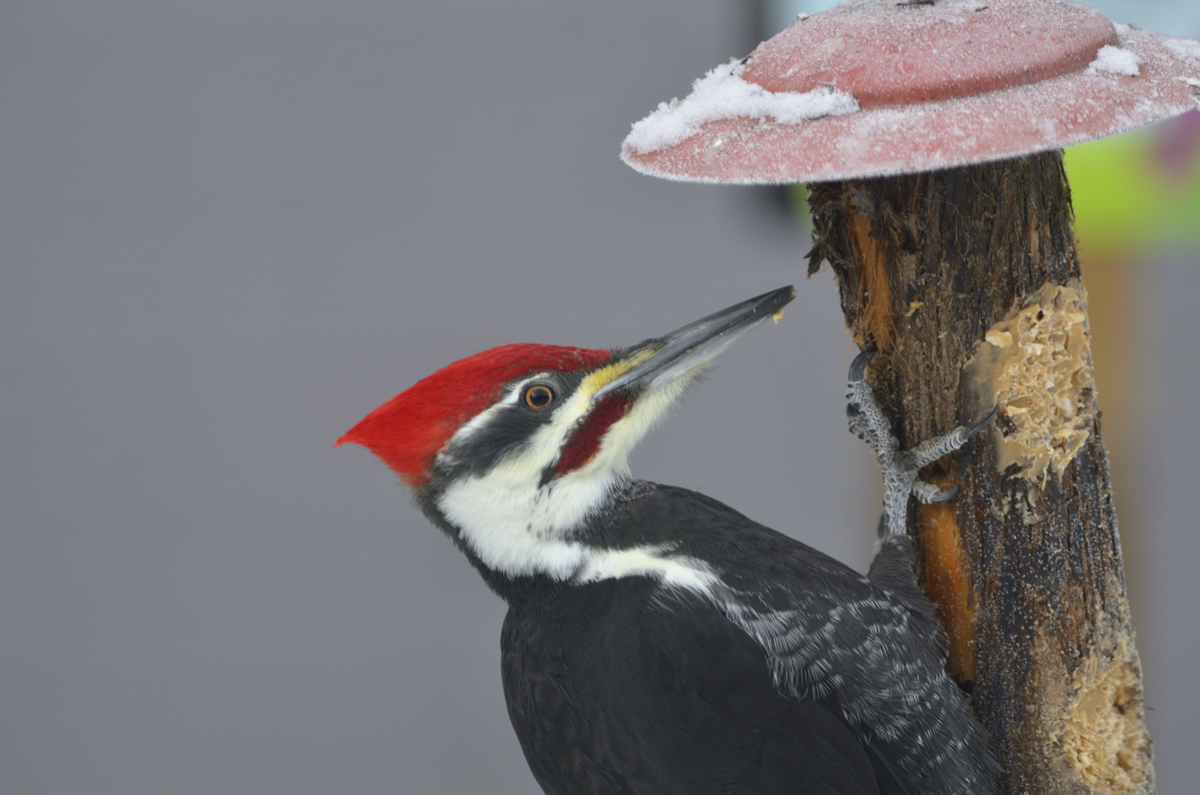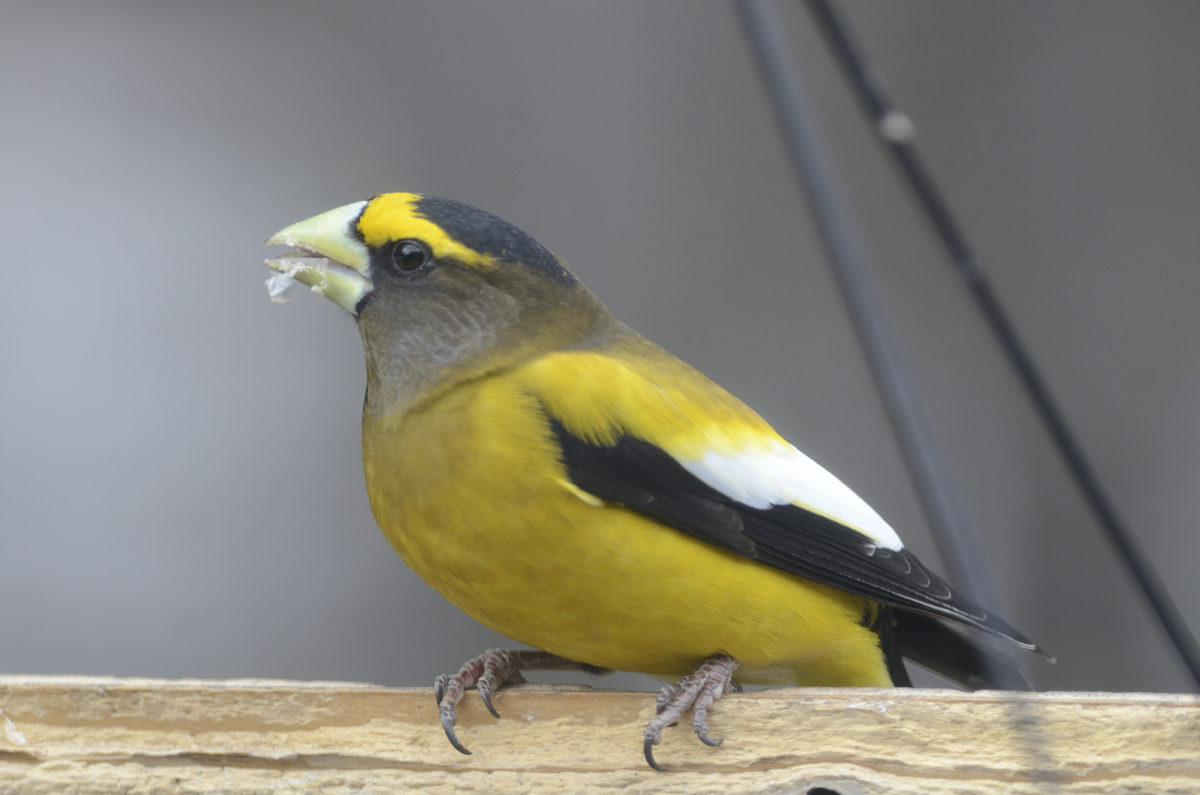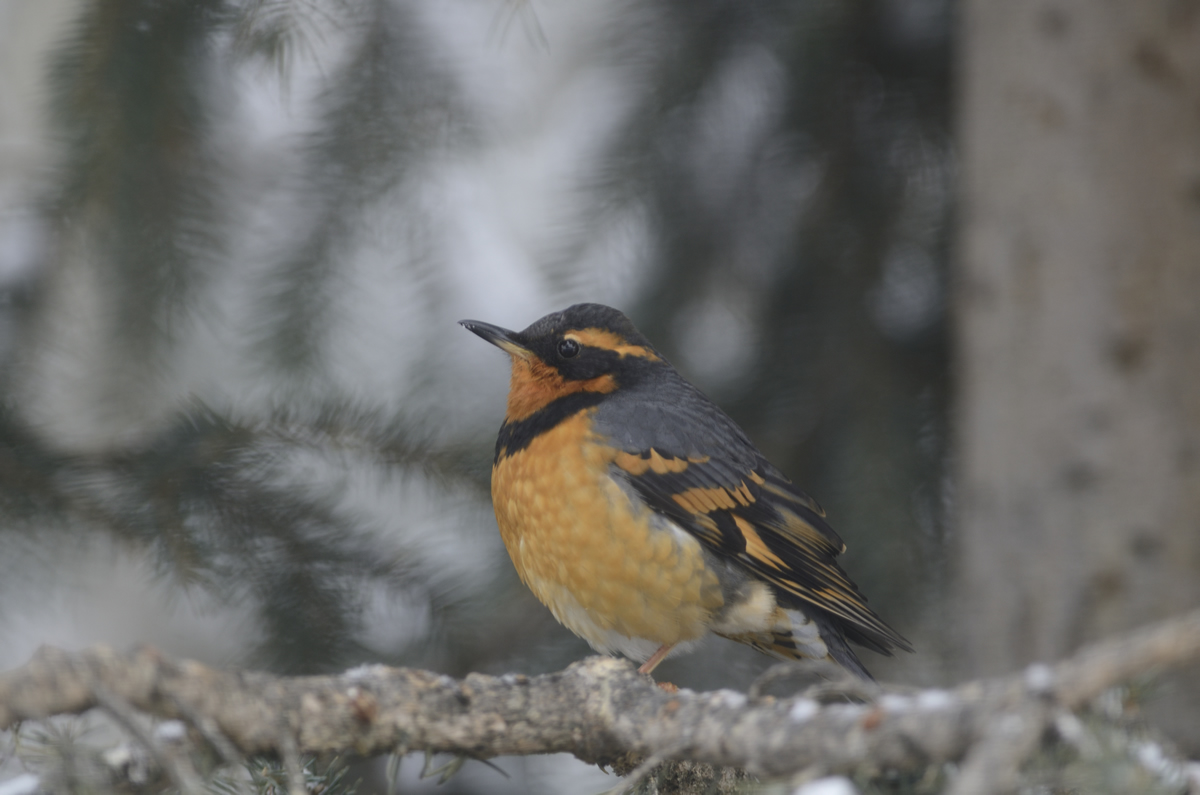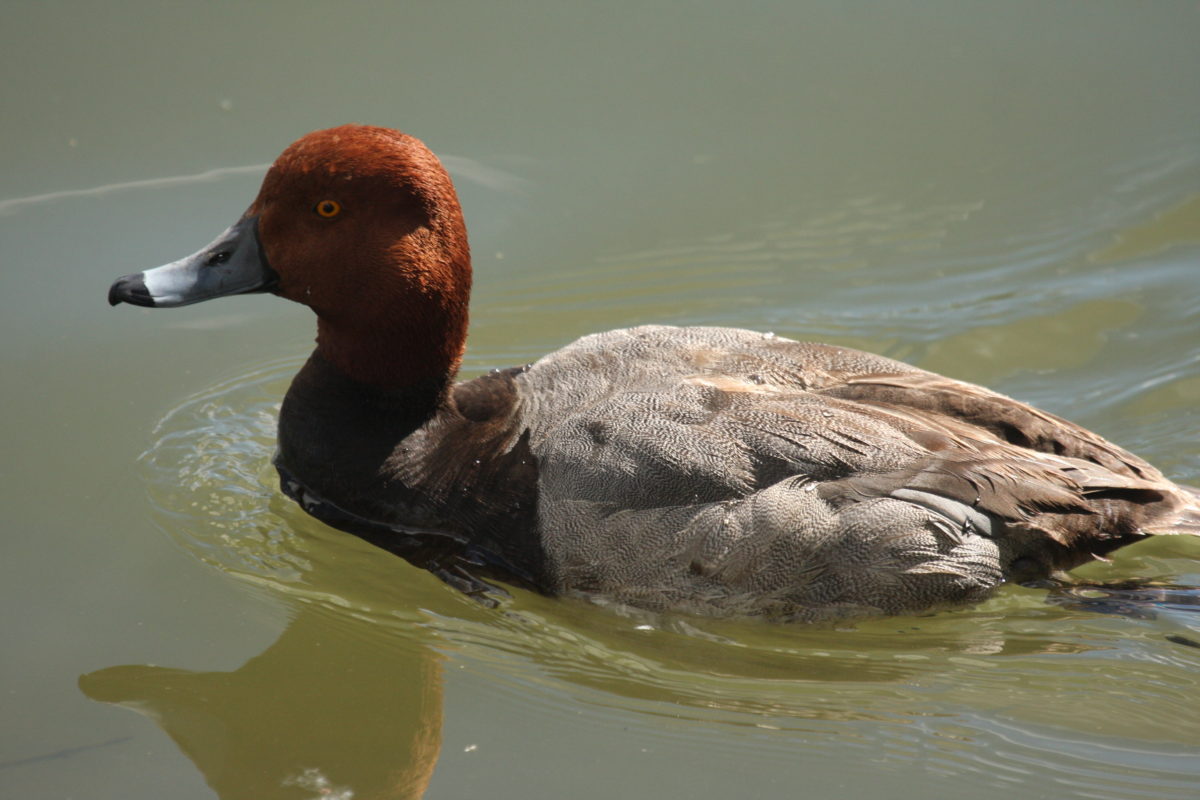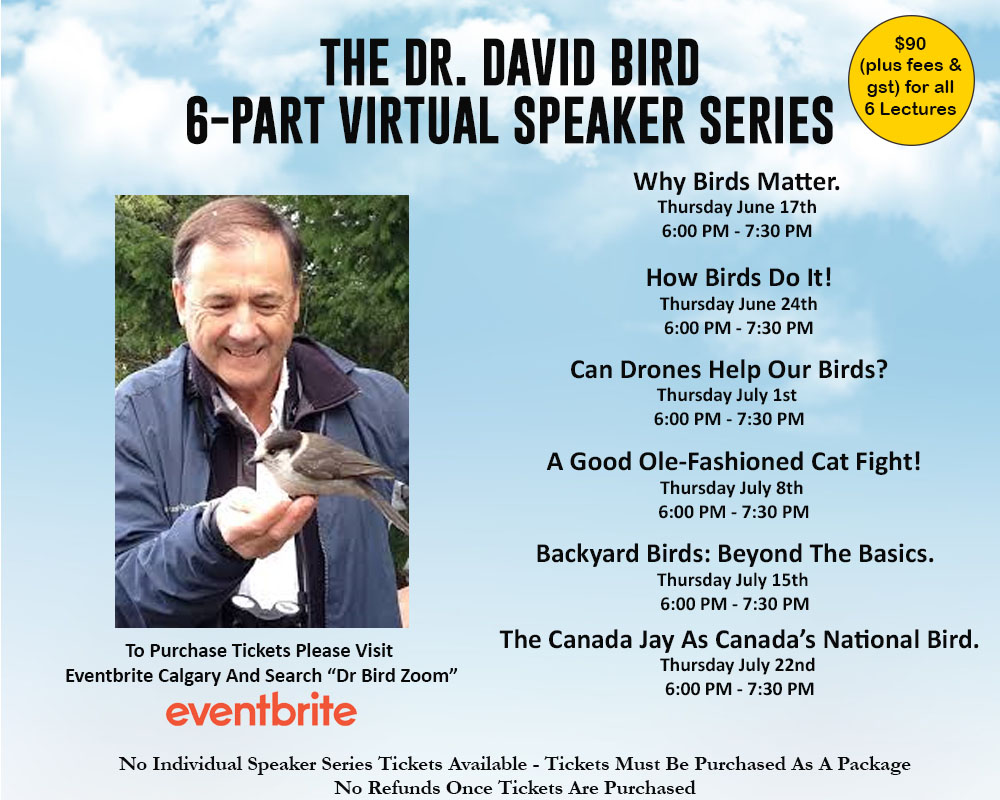Posted by Bob Lefebvre
The counting and correcting is done, and here are the final results of the 2021 Calgary Christmas Bird Count (CBC). I helped out with the Feeder watchers again this year. Matthew Wallace coordinated the count and finalized the results. Lara Fitzpatrick created the spreadsheets that organized the data. It was a fun learning experience for us, and many emails were exchanged and many hours spent in Zoom meetings.
First, watch this summary video of the count results presented by Matthew:
The 2021 count was held on Sunday December 19. The temperature ranged from about -13 C to -10 C, with some light snow and winds of 10 to 20 kph. So the conditions were pretty good.
We had good participation this year, with 136 people out in the field (pretty much as many as we could manage with Covid protocols and the number of leaders we had) and 177 Feeder Watchers counting in their yards at 125 addresses (we can definitely add more Feeder Watchers).
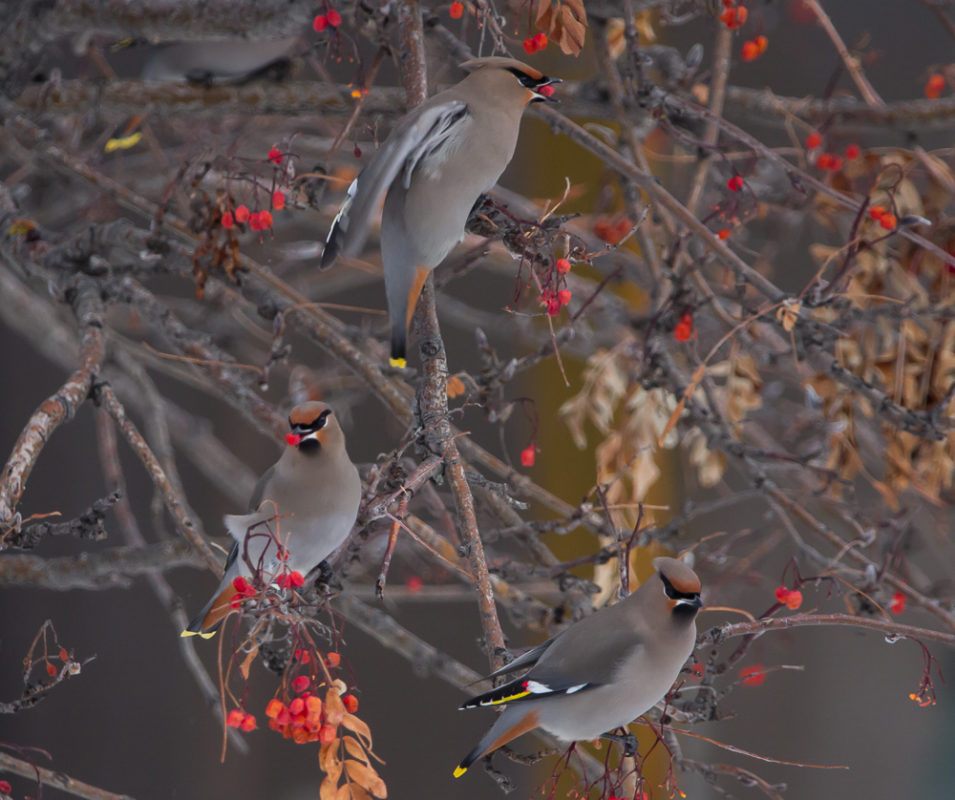
The final total on count day was 73 species, plus another four species seen during Count Week (December 16-22) but missed on Count Day. The total number of individual birds recorded was 71,468. (All numbers have been corrected to account for possible double-counting.)
| Field Observers | Feeder Watchers |
| 70 species | 36 species |
| 65,640 birds | 5,828 birds |
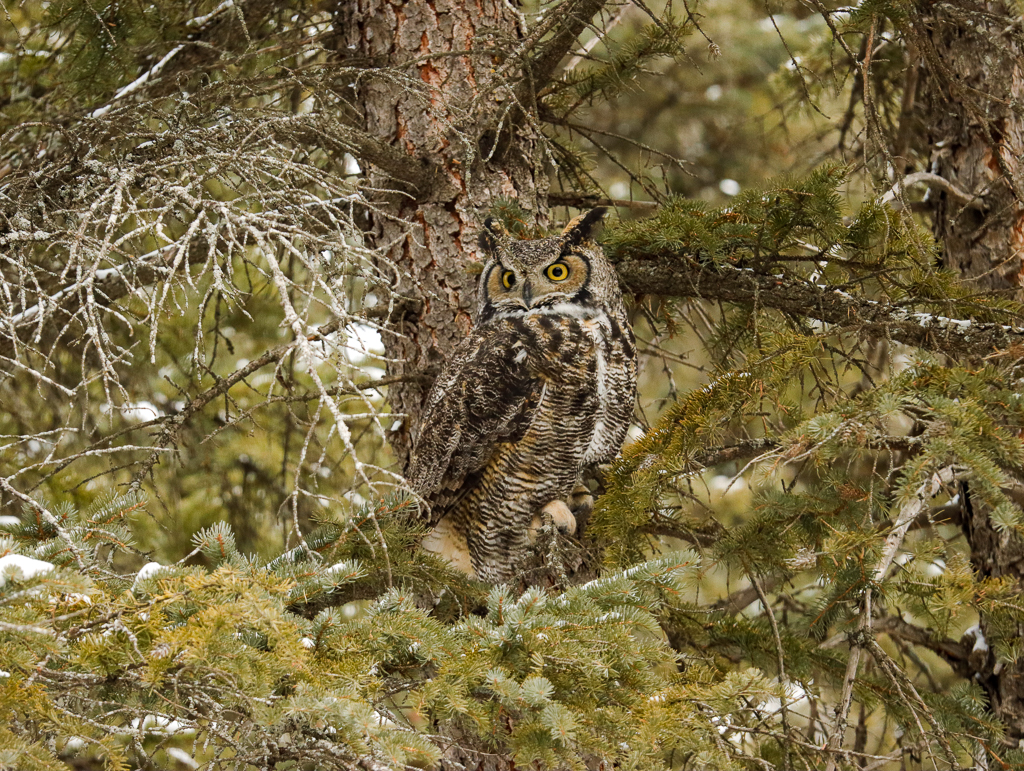
Below is the bird list and the number of each species reported:
| Cackling Goose | 4 |
| Canada Goose | 18,954 |
| Trumpeter Swan | 5 |
| Tundra Swan | 1 |
| Wood Duck | 3 |
| Gadwall | 1 |
| Mallard | 17,251 |
| Green-winged Teal | 1 |
| Canvasback | 2 |
| Redhead | 18 |
| Ring-necked Duck | 5 |
| Greater Scaup | 2 |
| Lesser Scaup | 5 |
| Harlequin Duck | 4 |
| Bufflehead | 144 |
| Common Goldeneye | 554 |
| Barrow’s Goldeneye | 3 |
| Hooded Merganser | 2 |
| Common Merganser | 86 |
| Ruddy Duck | 1 |
| Sharp-tailed Grouse | 3 |
| Gray Partridge | 58 |
| Ring-necked Pheasant | 11 |
| Rock Pigeon (Feral Pigeon) | 1,450 |
| Eurasian Collared-Dove | 2 |
| American Coot | 1 |
| Wilson’s Snipe | 1 |
| Sharp-shinned Hawk | 4 |
| Northern Goshawk | 6 |
| Bald Eagle | 55 |
| Rough-legged Hawk | 6 |
| Great Horned Owl | 9 |
| Snowy Owl | 1 |
| Northern Saw-whet Owl | 1 |
| Belted Kingfisher | 3 |
| American Three-toed Woodpecker | 2 |
| Downy Woodpecker | 264 |
| Hairy Woodpecker | 41 |
| Pileated Woodpecker | 4 |
| Northern Flicker | 419 |
| Merlin | 24 |
| Gyrfalcon | 1 |
| Northern Shrike | 8 |
| Blue Jay | 138 |
| Black-billed Magpie | 2,529 |
| American Crow | 65 |
| Common Raven | 649 |
| Black-capped Chickadee | 2,218 |
| Mountain Chickadee | 7 |
| Boreal Chickadee | 7 |
| Golden-crowned Kinglet | 2 |
| Red-breasted Nuthatch | 199 |
| White-breasted Nuthatch | 114 |
| Brown Creeper | 17 |
| American Dipper | 3 |
| European Starling | 326 |
| Townsend’s Solitaire | 18 |
| American Robin | 82 |
| Bohemian Waxwing | 15,676 |
| Cedar Waxwing | 11 |
| House Sparrow | 7,394 |
| Pine Grosbeak | 79 |
| House Finch | 2,015 |
| Common Redpoll | 294 |
| Hoary Redpoll | 2 |
| White-winged Crossbill | 41 |
| Pine Siskin | 50 |
| American Tree Sparrow | 3 |
| Fox Sparrow | 1 |
| Dark-eyed Junco | 91 |
| White-crowned Sparrow | 1 |
| White-throated Sparrow | 9 |
| Song Sparrow | 2 |
| Other: Sp./Slash/Hybrid | 5 |
The four Count Week birds were Varied Thrush (a continuing backyard bird that failed to show on Count Day), a Killdeer seen in Griffiths Wood Park, a Prairie Falcon seen in the east end on December 18th, and a Greater White-fronted Goose reported and photographed on the Elbow River at Sandy Beach, also on December 18.
Some of the notable birds this year were the two swan species and the Ruddy Duck (all continuing at Carburn Park), the three Sharp-tailed Grouse seen in the Tsuut’ina Nation in the SW, a Wilson’s Snipe and Snowy Owl at Carburn, a White-crowned Sparrow in the Weaselhead, and a Gyrfalcon.
We also had one species that had never been reported in the 69 previous Calgary counts – a Fox Sparrow in the yard of one of our Feeder watchers. This brings our cumulative total of all species reported on Calgary CBC’s to 143.

Matt Wallace, the count coordinator, has used the data to create some very interesting maps. (The maps below, and many more, will be posted on the Nature Calgary site when they are all complete.)
The Count Circle is divided into Sections, and here you can see how many species were found in each Section, and how the geography of the city influences species density.
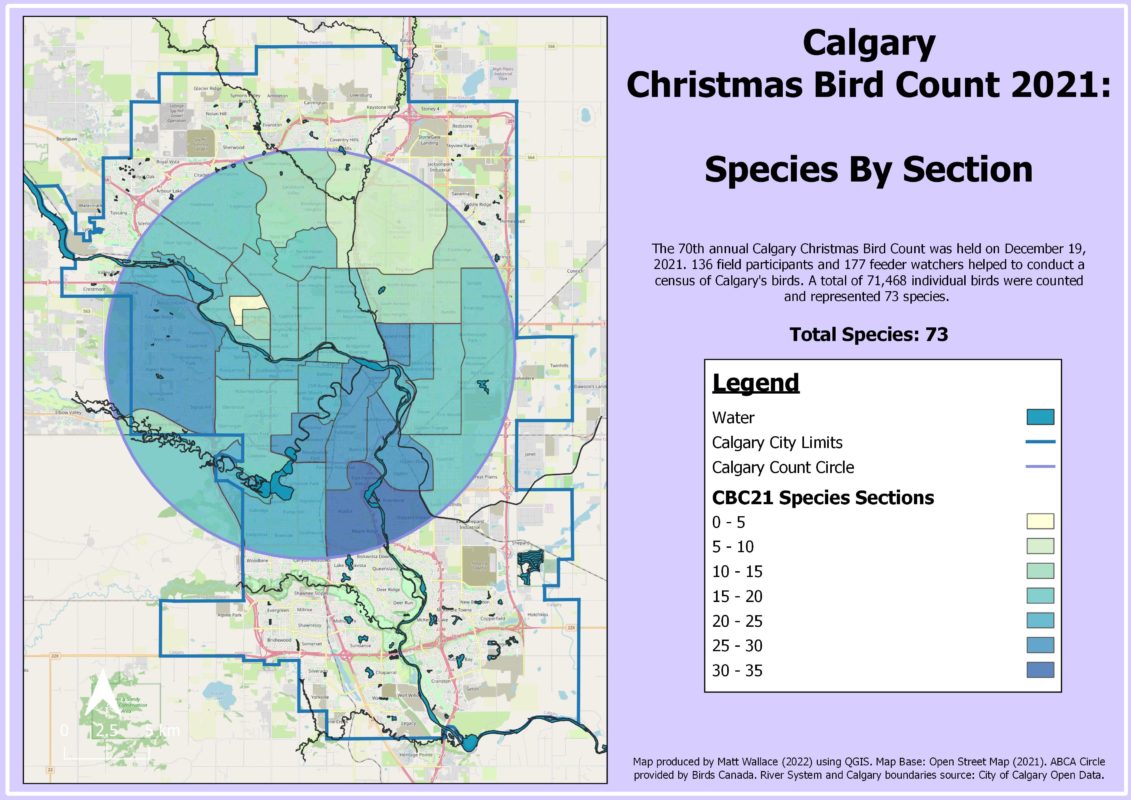
Due to the open water here, we get a lot of Mallards and Canada Geese overwintering. We also often have big flocks of Bohemian Waxwings in the winter. As a result, we tend to get really high numbers of total individual birds reported. This year, 71,468 individual birds were counted. This is one of the highest totals (and possibly the highest) of any of the CBC’s in Canada this year. It is far higher than the totals for the Edmonton or Toronto counts, for example.
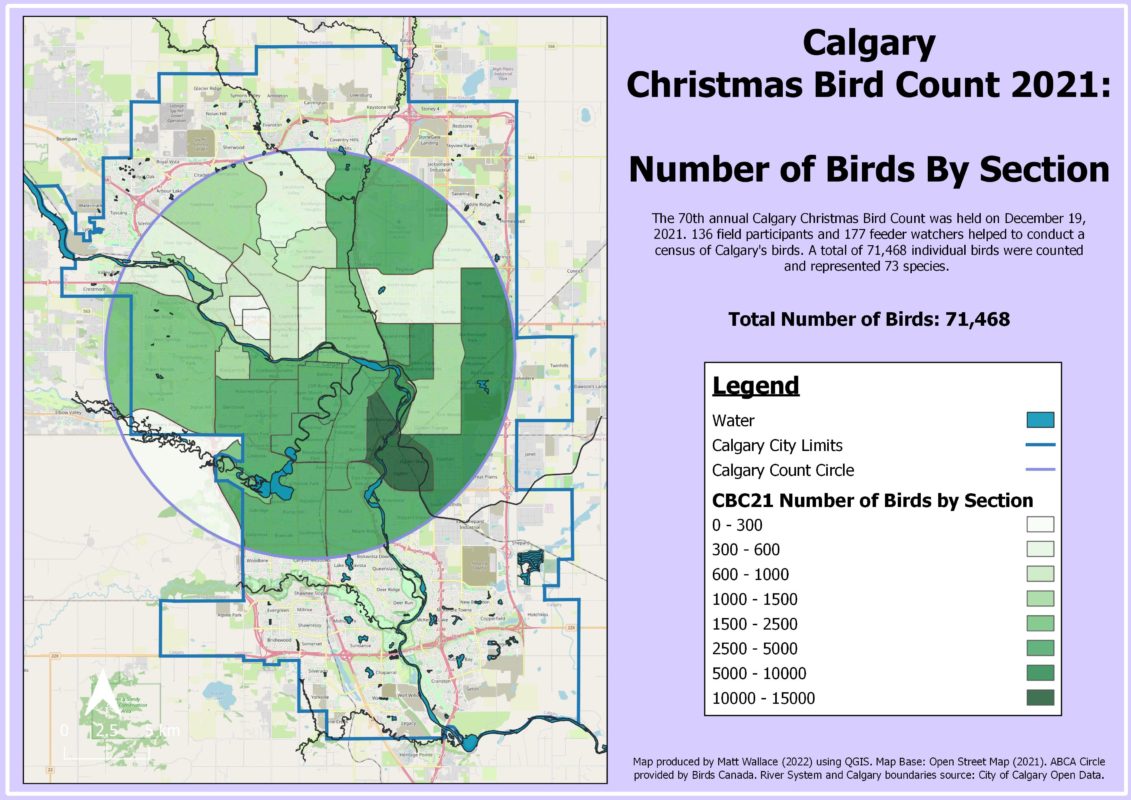
Below is a map that shows all the Feeder Watcher addresses (the white dots). Some areas have quite a few, but we can definitely use more!
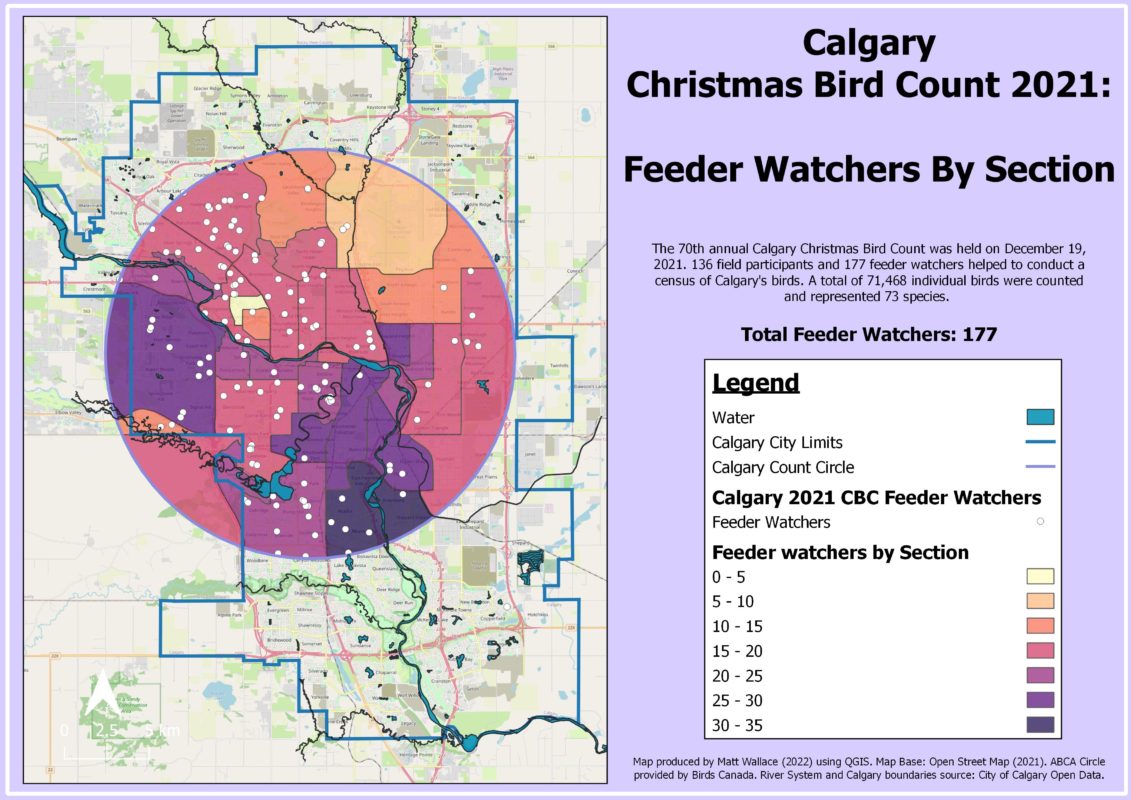
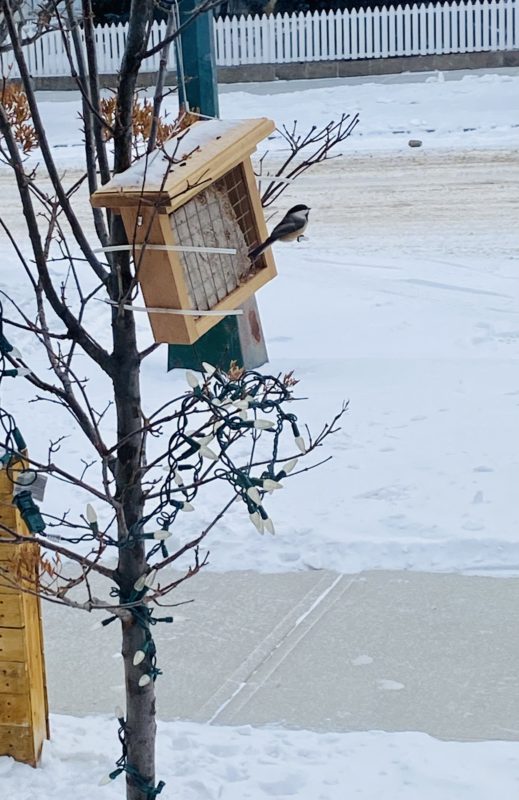
It’s interesting to look at some individual species. Bald Eagles:
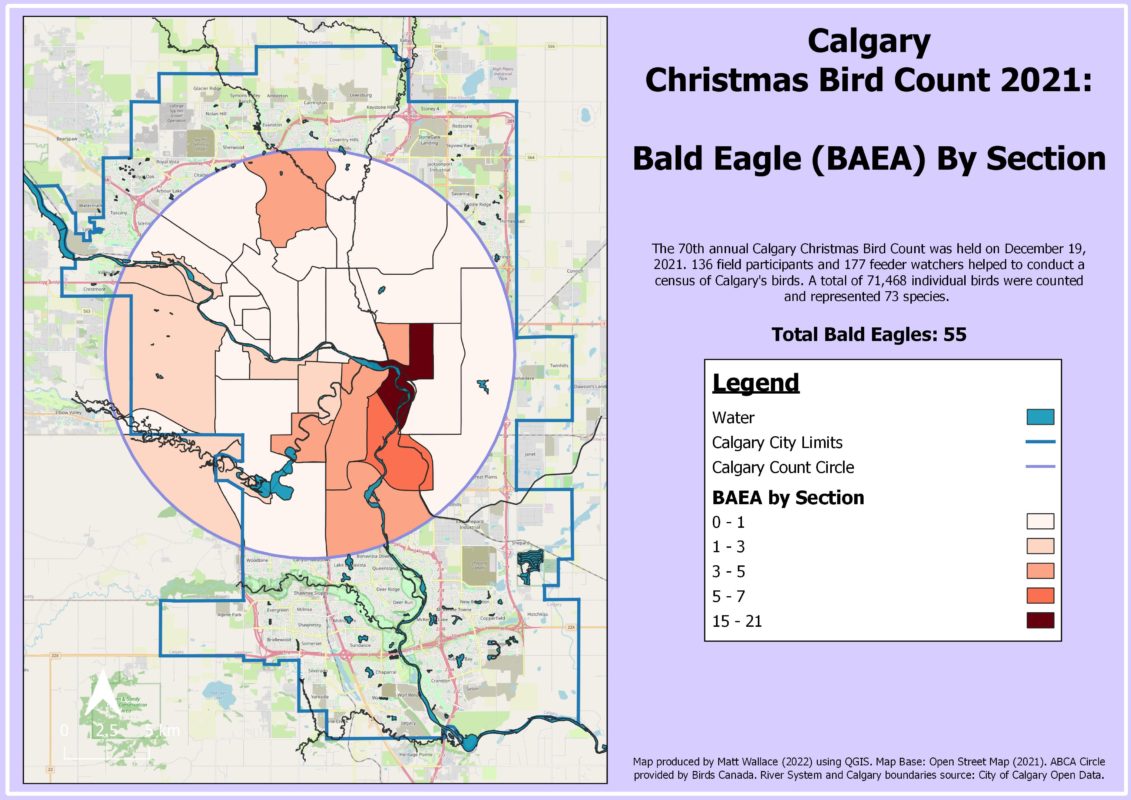
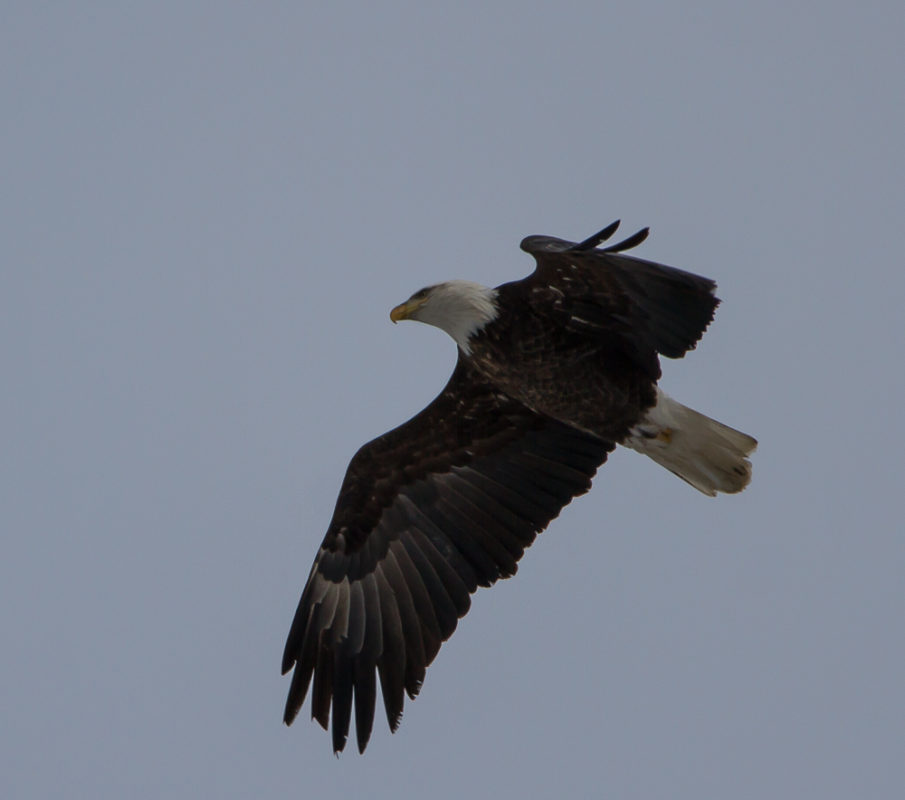
The Eagles are concentrated along the lower stretches of the Bow River, where they feed mostly on sick or injured Mallards.
Here is the Mallard map:
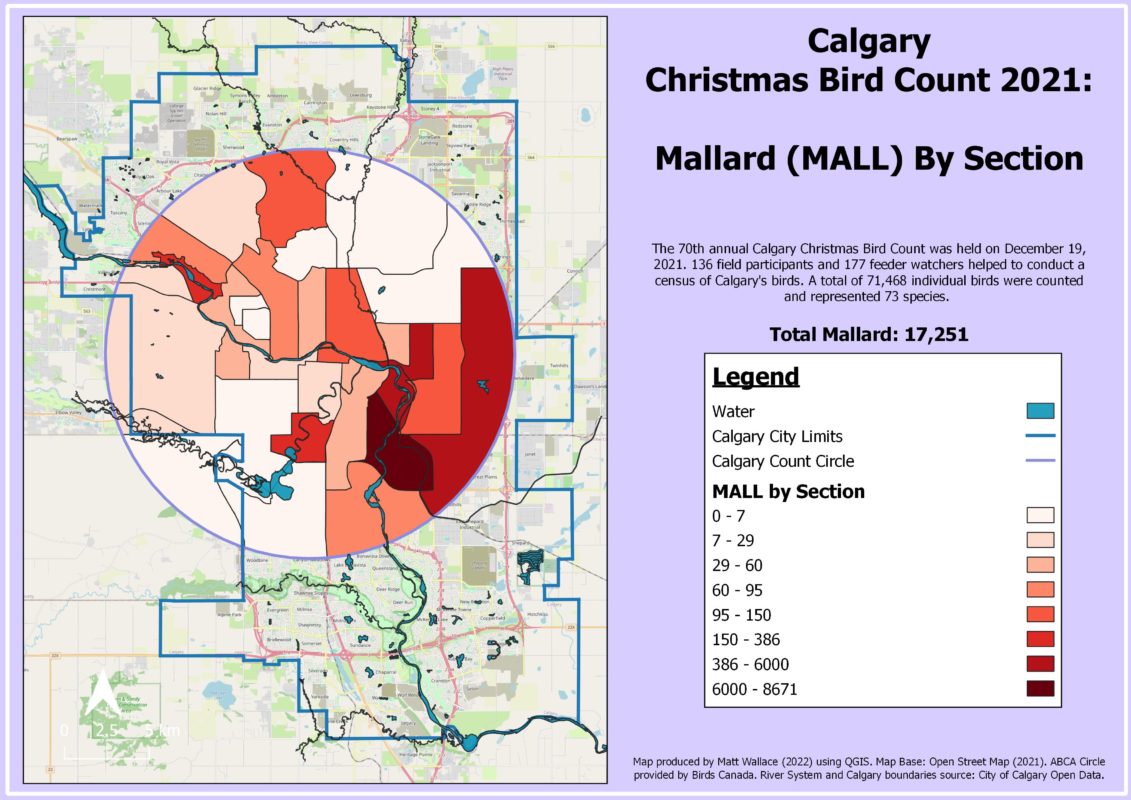
Note how closely the Mallard distribution mirrors that of Bald Eagles. Mallards rest on the river, and go out to farmer’s fields to feed. There was also a huge concentration of 6,000 birds in the bit of open water at the northeast corner of Elliston Lake. Perhaps this is a safe place for them to rest, where there are fewer eagles around to prey on them than along the Bow.
The Canada Goose numbers were even higher than the Mallard numbers, with a similar distribution.
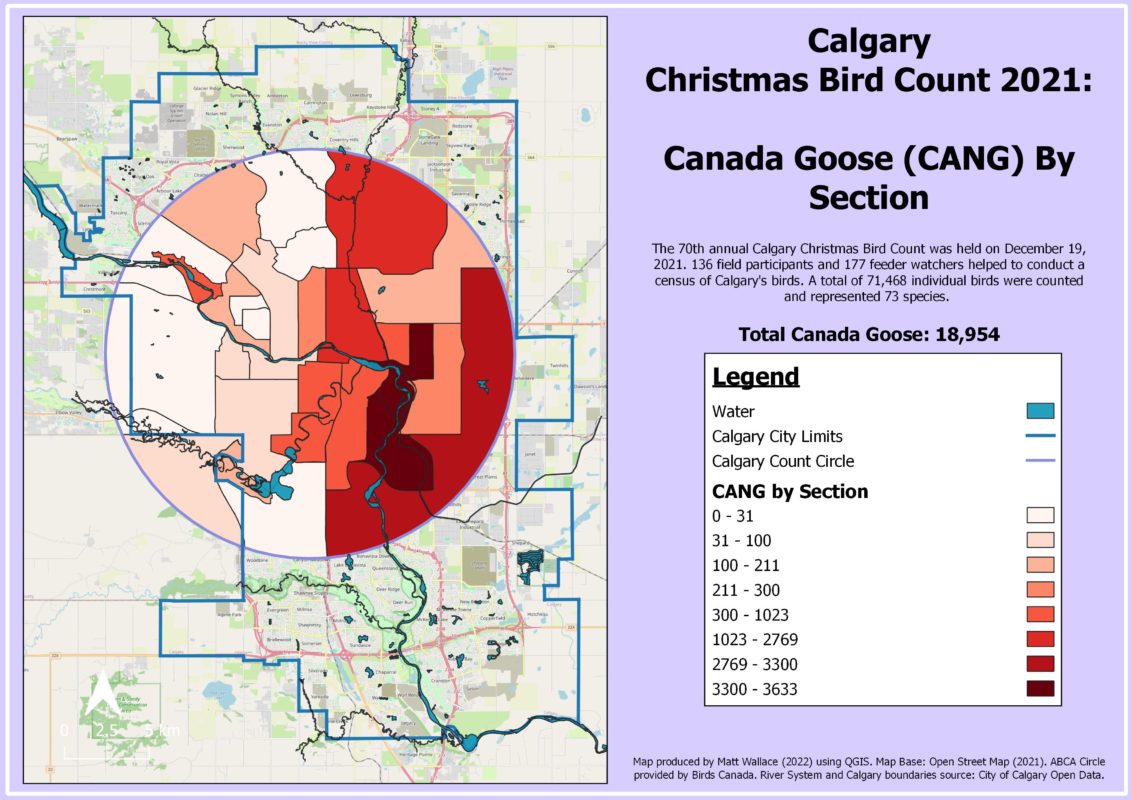
Black-billed Magpies are probably the most visible bird in Calgary, as they are found in all habitats and are very vocal. Many residents find them too aggressive and noisy to be likeable, but they are fascinating, beautiful, and intelligent birds. Like other urbanophiles (American Crows, House Sparrows, House Finches, and Rock Pigeons for example), they are doing very well in the urban environment.
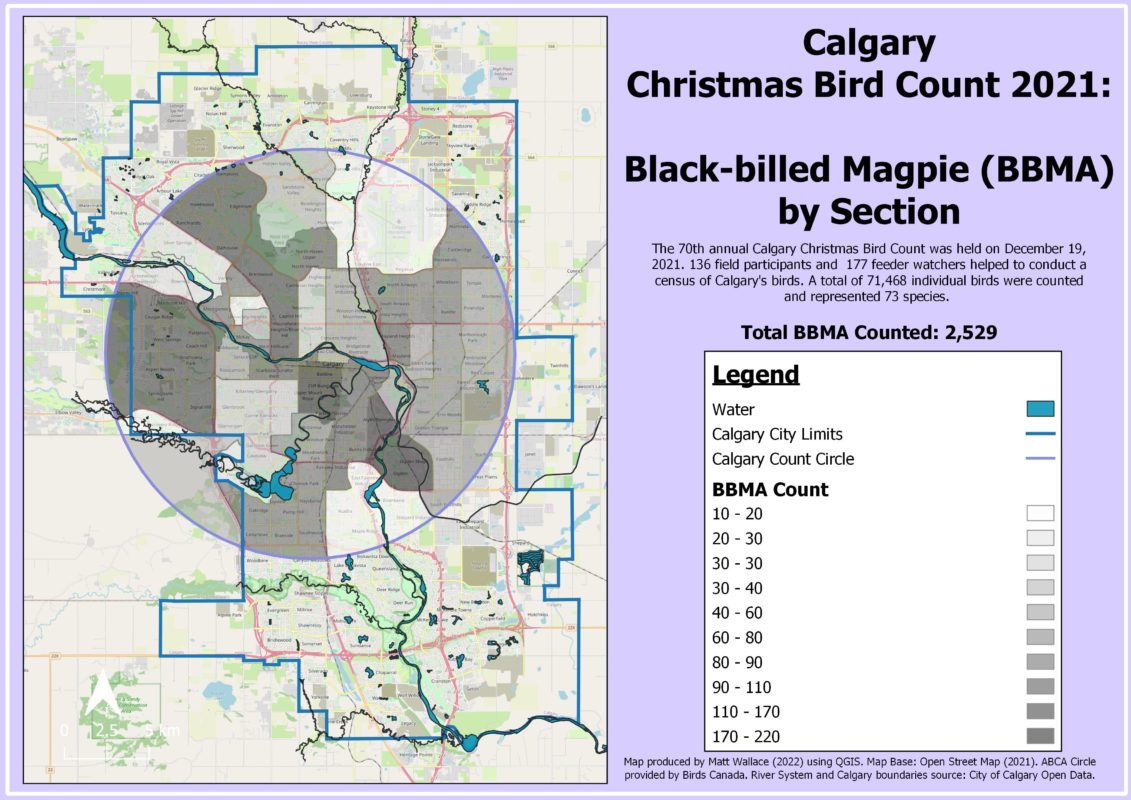
The total number of Magpies reported on the CBC continues on a long-term upward climb:

As in the Magpie example above, we can use the CBC data to produce graphs of long-term trends of the overall results and of the numbers of individual species. The next graph shows that the number of participants and party-hours has steadily increased over time, as has the total number of birds recorded, but the number of species seen each year has plateaued.

The 73 species we had this year is the third-highest total ever, but it is line with a pretty flat graph since the mid-1980’s:

Below is an interesting graph that shows the number of Sharp-tailed Grouse reported. We had three this year, and three in 2016. But that’s it for the last twenty-plus years. They used to be found on Nose Hill and other areas at the city’s edge. But Nose Hill is now surrounded by development and the city has expanded to most edges of the Count Circle.

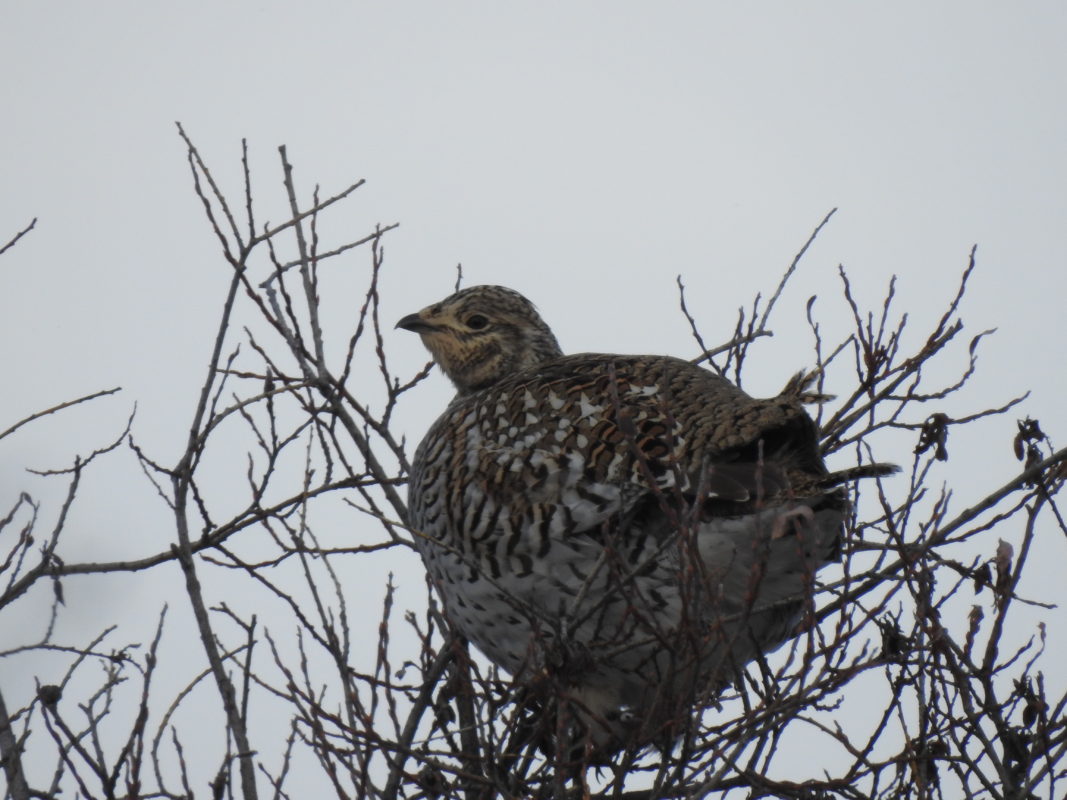
The results of the Calgary Count and several other nearby CBC’s were presented at the January meeting of Nature Calgary’s Bird Study Group. The meeting was recorded, and a replay will soon be available on the Nature Calgary site here.
The next Calgary CBC will be on Sunday December 18, 2022. If you haven’t taken part before and are interested in participating, either as a Field Observer or a Feeder Watcher, email me at birdscalgary[at]gmail.com.
Many thanks to Matt Wallace for all his hard work in organizing the count and producing the maps, to Lara Fitzpatrick, who created the spreadsheets that captured all the data, and to the photographers.
Here is a link to an article about the Calgary Count results on CBC news, including a video interview.
Be sure to subscribe to Matthew’s Citizen Blitz channel on YouTube to keep informed about upcoming citizen science events in Calgary – and to see more great nature videos!. You can also follow him on Twitter (atcitynatureyyc) and on Instagram (atcitizenblitz).
